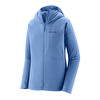Alex Walpoth, rope-solo up Vint ani do in the Dolomites

 1 / 6
1 / 6 Alex Walpoth
Alex Walpoth
VINT ANI DO SOLO ROPO SOLO by Alex Walpoth
This summer I toyed with the idea of climbing something alone, to become more independent and broaden my alpinism. I carefully studied and learned some rope-soloing techniques and soon felt ready to embark on a route. Then in August, after having worked for three days with the mountain rescue service, I felt properly motivated and decided to go for "Vint ani do". I chose this route not only because it's an important climb, but also because I knew it well: in fact, I'd already climbed it four times previously to redpoint it and it's 4-metre horizontal roof, graded 8a.
I've always climbed with friends in the past but this time I consciously chose to do without their assuring presence. It felt unusual alone, below the start of the route, and I was also overcome by fear but a short monologue provided the necessary motivation. The first two pitches went smoothly, in fact I felt great. I climbed these pitches, fixed the ropes, descended to retrieve the gear and jumar back up. Pitch three breaches a hard slab, I was convinced I'd climb it all-free and despite the soloist disturbing my climbing flow I managed it without a fall.
The next pitches were easier but the traverses forced me to do some complicated ropework and this cost time and strength. I paused for a few minutes below the roof and it was here that it first struck me what it meant to be climbing alone on a 300-metre face. I couldn't count on my climbing partner and his encouragement and I felt tired, both physically and mentally. Thoughts crept in about using the second rope I'd brought along for a retreat, but I was determined to continue and shot up the exhilarating corner that led to beneath the roof. Just like the other times, this seemed impressive to say the least.
I'd already ruled out climbing this section free: self-belaying across the horizontal roof would have been complicated and less safe so I pulled myself up clumsily, from one peg to the next. At the lip I was overcome by a rush of intense excitement, the exposure was immense and I felt lonely. After removing the quickdraws from this difficult pitch I made a massive pendulum into the void.
The last two pitches proved difficult physically, fortunately though I had no doubts whatsoever and executed the moves automatically. After seven hours I reached the summit and had to deal with an unusual feeling of disappointment: I failed to enjoy what I'd just achieved because I'm used to sharing the joy with my climbing partners. For a moment I even doubted whether it had all been worth it and got lost in a bunch of negative thoughts.
I descended at dusk and met some friends who were still sport climbing. Only much later did I comprehend the importance of this experience that has opened new horizons, not only for my mountaineering, but above all mentally.
Thanks to Mountain Hardwear for the technical apparel.



 Copia link
Copia link





 See all photos
See all photos






















